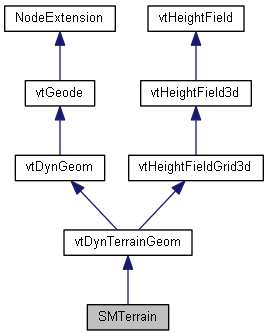|
|
DTErr | Init (const vtElevationGrid *pGrid, float fZScale) |
| | initialization
|
| |
| DTErr | BasicInit (const vtElevationGrid *pGrid) |
| |
| virtual void | SetPolygonTarget (int iPolygonCount) |
| |
| int | GetPolygonTarget () const |
| |
| int | NumDrawnTriangles () const |
| |
| int | IsVisible (const FSphere &sphere) const |
| |
| int | IsVisible (const FPoint3 &point0, const FPoint3 &point1, const FPoint3 &point2, const float fTolerance=0.0f) const |
| |
| int | IsVisible (const FPoint3 &point, float radius) const |
| |
| bool | IsVisible (const FPoint3 &point) const |
| |
| void | AddMesh (vtMesh *pMesh, int iMatIdx) |
| |
| void | RemoveMesh (vtMesh *pMesh) |
| |
| void | RemoveAllMeshes () |
| |
| void | AddTextMesh (vtTextMesh *pMesh, int iMatIdx, bool bOutline=true) |
| |
| uint | NumMeshes () const |
| |
| vtMesh * | GetMesh (int i) const |
| |
| vtTextMesh * | GetTextMesh (int i) const |
| |
| void | SetEnabled (bool bOn) |
| |
| bool | GetEnabled () const |
| |
|
void | SetCastShadow (bool b) |
| | Set this node to cast a shadow, if it is under a vtShadow node. Default is false.
|
| |
|
bool | GetCastShadow () |
| | Get whether this node casts a shadow.
|
| |
|
void | GetBoundSphere (FSphere &sphere, bool bGlobal=false) |
| | Get the Bounding Sphere of the node.
|
| |

 Public Member Functions inherited from vtDynTerrainGeom
Public Member Functions inherited from vtDynTerrainGeom Public Member Functions inherited from vtDynGeom
Public Member Functions inherited from vtDynGeom Public Member Functions inherited from vtGeode
Public Member Functions inherited from vtGeode Public Member Functions inherited from NodeExtension
Public Member Functions inherited from NodeExtension 1.8.10
1.8.10